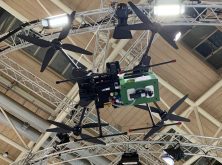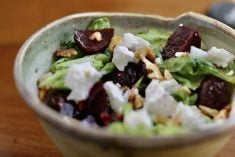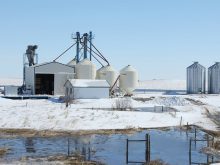STAR CITY, Sask. – Switching from dairy to elk farming might seem unusual to some, but it made perfect sense to Luke and Stephanie Perkins.
Luke grew up on a dairy just west of Star City but trained and worked as a conservation officer. He and Stephanie met while they were attending Lakeland College.
Postings followed at places as diverse as Cypress Hills, Sask., and Buffalo Narrows, Sask., where Stephanie worked as a jail guard.
But in the mid-1990s they were caught off guard by Luke’s parents’ decision to sell the dairy established by Luke’s grandfather after the Second World War.
Read Also

Communication key to bridging generation gap
Each generation is shaped by the predominant forces at play during their formative years. Acknowledging these influences can improve communication among the generations.
“When I was 18 I’d have bet you a million dollars I’d never come back,” Luke said.
But they did. And they operated the dairy for a few years before deciding they needed a lifestyle that offered more time for a young family.
The first of their new livestock arrived on the farm in 1996: five elk from a farm in British Columbia and 275 fallow deer.
Within a couple of years the fallow deer were gone. The dairy was wound down in 2002 and the farm is now home to more than 300 elk.
The Perkinses like the economics of raising elk. Luke said they can raise four elk for the price of one beef cow.
“There’s no bedding, cleaning pens, spreading straw … they prefer to eat snow in the winter,” he said.
“They thrive on lower quality feed in the winter.”
Stephanie agreed, pointing out the herd did well on low quality second cut hay from two years ago.
As well, she said the animals are well suited to the climate.
Still, it’s been a tough go for all elk producers since they lost their prime South Korean market for velvet antler products because of disease concerns.
The Perkinses owned and operated a backhoe for a while and Luke now hauls machinery using a semi they purchased. That has been their main source of income for the last while, Stephanie said.
They are also converting their barn to an abattoir. They had been custom-raising dairy calves, but then BSE hit and the barn was sitting empty. It’s a slow process. They have been renovating for the last 18 months as they can afford it.
Last year they butchered 40 head and sold the meat from their farm-gate.
“Farmgate sales are nice, but you can’t live off them,” Stephanie said.
They see the abattoir being used for cattle, deer and bison. They live in a major hunting area, which also has 35 other elk farms.
Luke, who has been president of the Saskatchewan Elk Breeders Association for three years, said there were 401 producers in the province when the Korean market closed. There are now 411.
The provincial herd has increased to 44,000 from 32,000, although the larger herd still pales in comparison to New Zealand’s 3.5 million elk.
Luke said there is a future in the elk industry. Producers were profitable before the borders closed and they have since been looking at ways to make money again.
“Our milk is velvet,” Luke said, comparing the dairy and elk businesses. “But we still need a market for our meat, our breeding stock.”
There are also hunt farms and while some people are uncomfortable with that industry, Stephanie said it means elk producers don’t have to kill their animals to get their main product to market.
EBay is another market. On-line buyers, Americans in particular, are willing to pay good money for hard antlers. People often stop by the Perkins farm and ask for them. Customers hang antlers on the wall or use them for furniture, chandeliers, hat racks, candleholders and lawn ornaments. Some sets have sold on eBay for as high as $1,000 US.
Luke said he has let horns grow out just to see what he could get for them. Prices range from $25 per pound and up, Stephanie added.
“You have to find your own markets because there is no guarantee,” she said.
The recent establishment of a Saskatchewan-based co-op to sell velvet antler products into the veterinary market is an example of how producers are sticking with their industry.
“I know what the industry is capable of doing and we’re going to get there,” Luke said. “We’re trying to build something here for our kids just like the dairy was for us.”
Their family includes daughter Sadie, 11, and sons Dallan, six, and Ethan, four. Luke’s parents and brother and sister-in-law next door are also involved in the operation. His father handles the morning feeding chores.















